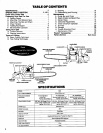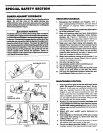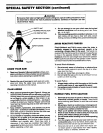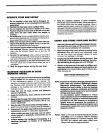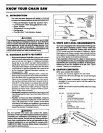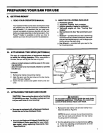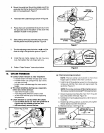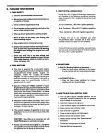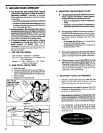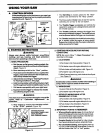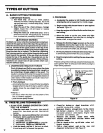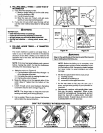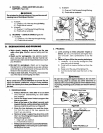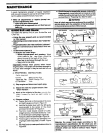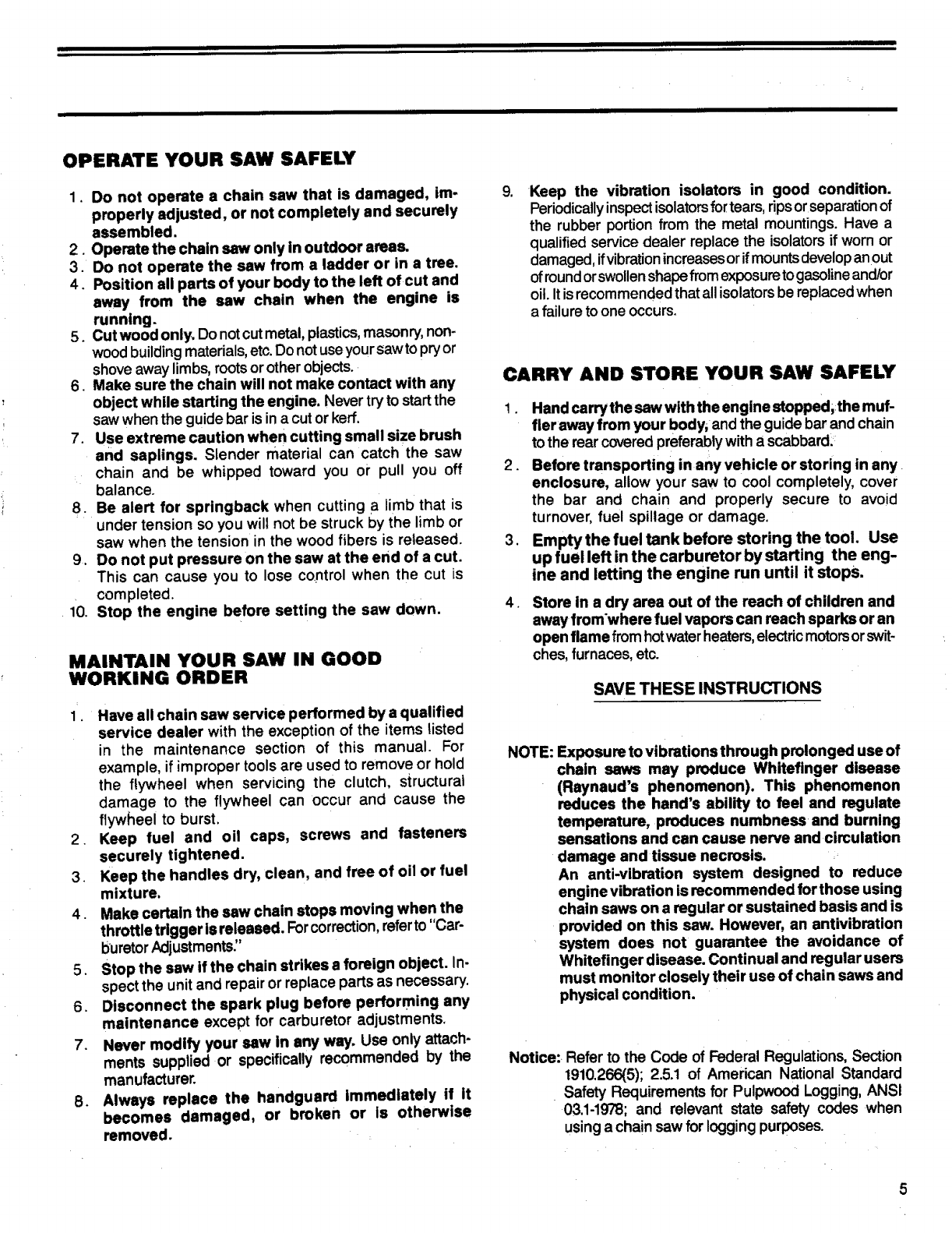
II_ I IIIIIII I 11 11 IIIIIIIIIIIII[IIIIIIIIII IIII IIIIIIIIIIIIIIIIIIIII IIIIIII
Ill I IllIll II IIHIIIIIIIII
OPERATE YOUR SAW SAFELY
•10.
1. Do not operate a chain saw that is damaged, im- 9.
properly adjusted, or not completely and securely
assembled.
2. Operate the chain saw only in outdoor areas.
3. Do not operate the saw from a ladder or in a tree.
4. Position all parts of your body to the left of cut and
away from the saw chain when the engine is
running.
5. Cut wood only, Do notcutmetal,plastics,masonry, non-
woodbuildingmaterials, etc.Do notuseyour saw topryor
shove away limbs,roots or otherobjects.
6. Make sure the chain will not make contact with any
object while starting the engine. Nevertryto start the
saw when the guide bar is in a cut or kerr,
7. Use extreme caution when cutting small size brush
and saplings. Slender material can catch the saw
chain and be whipped toward you or pull you off
balance.
8. Be alert for springback when cutting a limb that is
under tension soyou will not be struck by the limb or
saw when the tension inthe wood fibers is released.
9. Do not put pressure on the saw at the end of a cut.
This can cause you to lose control when the cut is
completed.
Stop the engine before setting the saw down. 4.
MAINTAIN YOUR SAW IN GOOD
WORKING ORDER
1. Have all chain saw service performed by a qualified
service dealer with the exception of the items listed
in the maintenance section of this manual. For
example, if improper tools are used to remove or hold
the flywheel when servicing the clutch, structural
damage to the flywheel can occur and cause the
flywheel to burst.
2. Keep fuel and oil caps, screws and fasteners
securely tightened.
3. Keep the handles dry, clean, and free of oil or fuel
mixture.
4. Make certain the saw chain stops moving when the
throttle trigger is released. Forcorrection,referto"Car-
buretorAdjustments"
5. Stop the saw if the chain strikes a foreign object. In-
spect the unit and repair or replace parts as necessary.
6. Disconnect the spark plug before performing any
maintenance except for carburetor adjustments,
7. Never modify your saw in any way. Use only attach-
ments supplied or specifically recommended by the
manufacturer.
8. Always replace the handguard immediately if it
becomes damaged, or broken or is otherwise
removed.
Keep the vibration isolators in good condition.
Periodicallyinspect isolatorsfortears,dpsor separation of
the rubber portion from the metal mountings. Have a
qualified service dealer replace the isolators if worn or
damaged, ifvibration increases orif mounts developanout
ofround orswollen shape from exposure togasoline and/or
oil. It isrecommended that all isolators be replaced when
a failure toone occurs,
CARRY AND STORE YOUR SAW SAFELY
1. Hand carry the saw with the enginestopped,the muf-
fler away from your body, and the guide bar and chain
totherear coveredpreferablywith a scabbard.:
2. Before transporting in any vehicle or storing in any
enclosure, allow your saw to cool completely, cover
the bar and chain and properly secure to avoid
turnover, fuel spillage or damage,
3, Empty the fuel tank before storing the tool. Use
up fuel left in the carburetor by starting the eng-
ine and letting the engine run until it stops.
Store in a dry area out of the reach of children and
away from'where fuel vapors can reach sparks or an
open flame fromhotwaterheaters,electric motorsorswit-
ches, furnaces,etc.
SAVE THESE INSTRUCTIONS
NOTE: Exposure tovibrationsthrough prolonged use of
chain saws may produce Whitefinger disease
(Raynaud's phenomenon). This phenomenon
reduces the hand's ability to feel and regulate
temperature, produces numbness and burning
sensations and can cause nerve and circulation
damage and tisaue necrosis.
An anti-vibration system designed to reduce
engine vibration isrecommended for those using
chain saws on a regular or sustained basis and is
provided on this saw. However, an antivibration
system does not guarantee the avoidance of
Whitefinger disease. Continual and regular users
must monitor closely their use of chain saws and
physical condition.
Notice: Refer to the Code of Federal Regulations, Section
I910.266(5); 2.5.1 of American National Standard
Safety Requirements for Pulpwood Logging, ANSI
03.1-1978; and relevant state safety codes when
using a chain saw for loggingpurposes.
5




